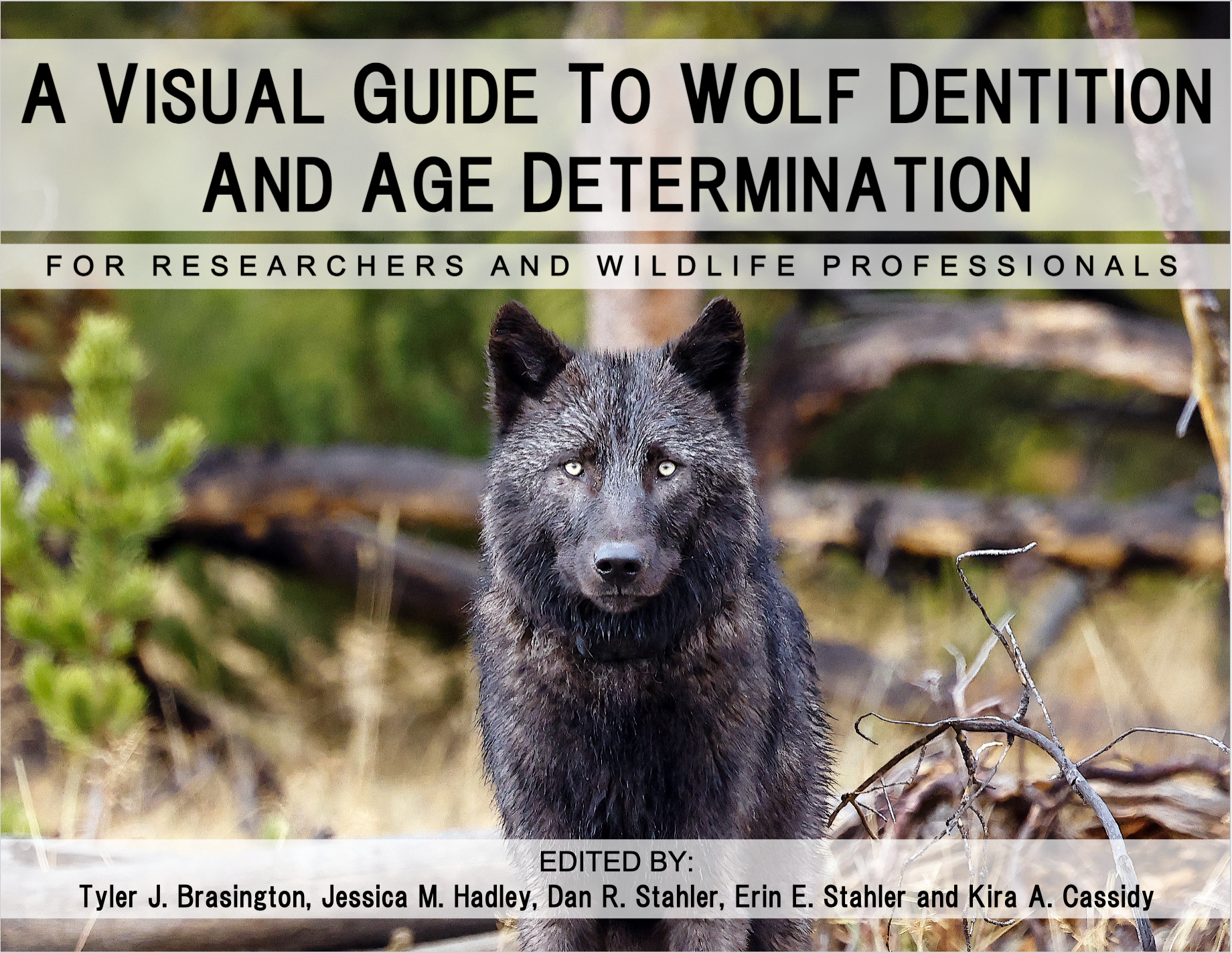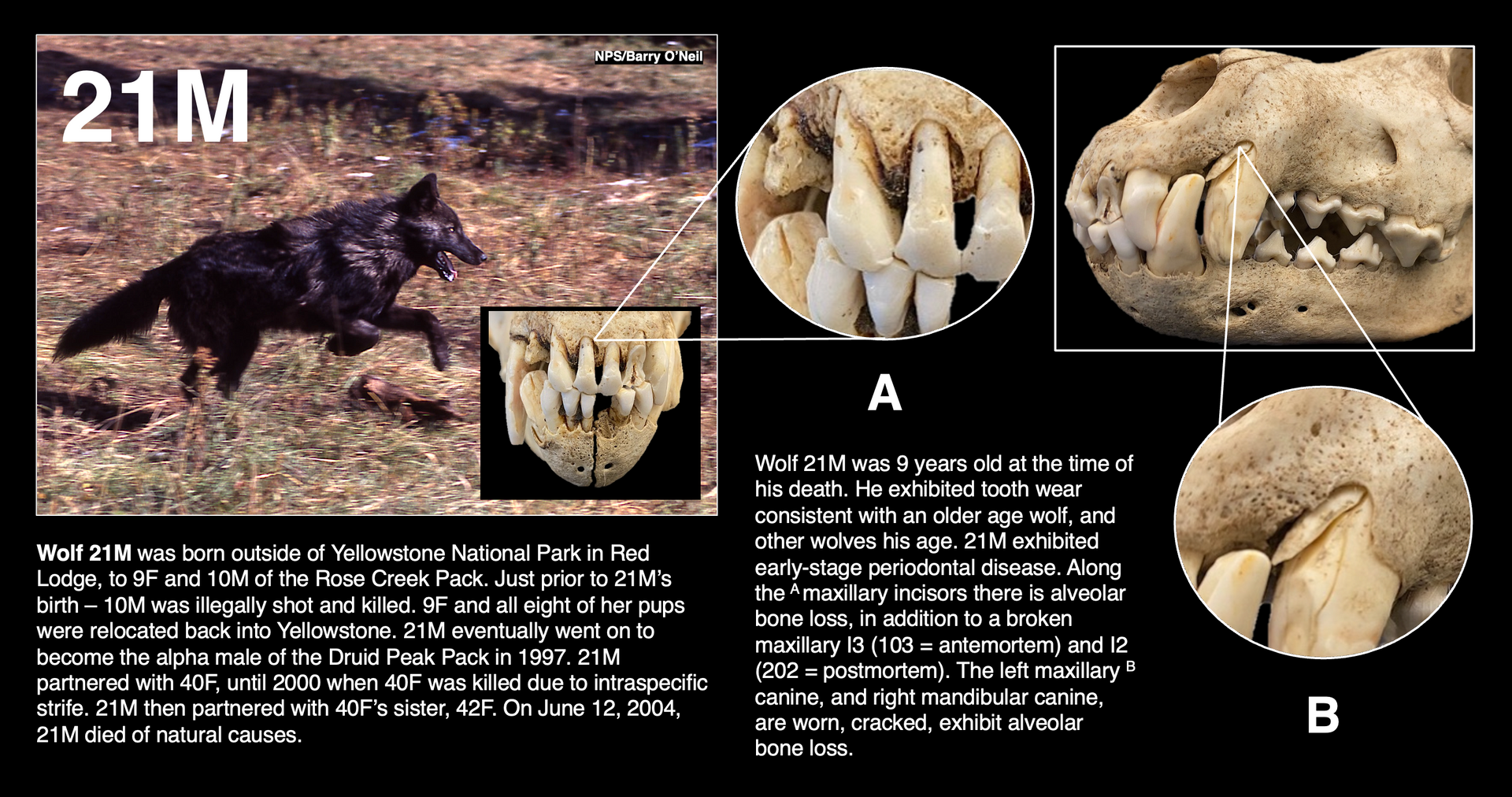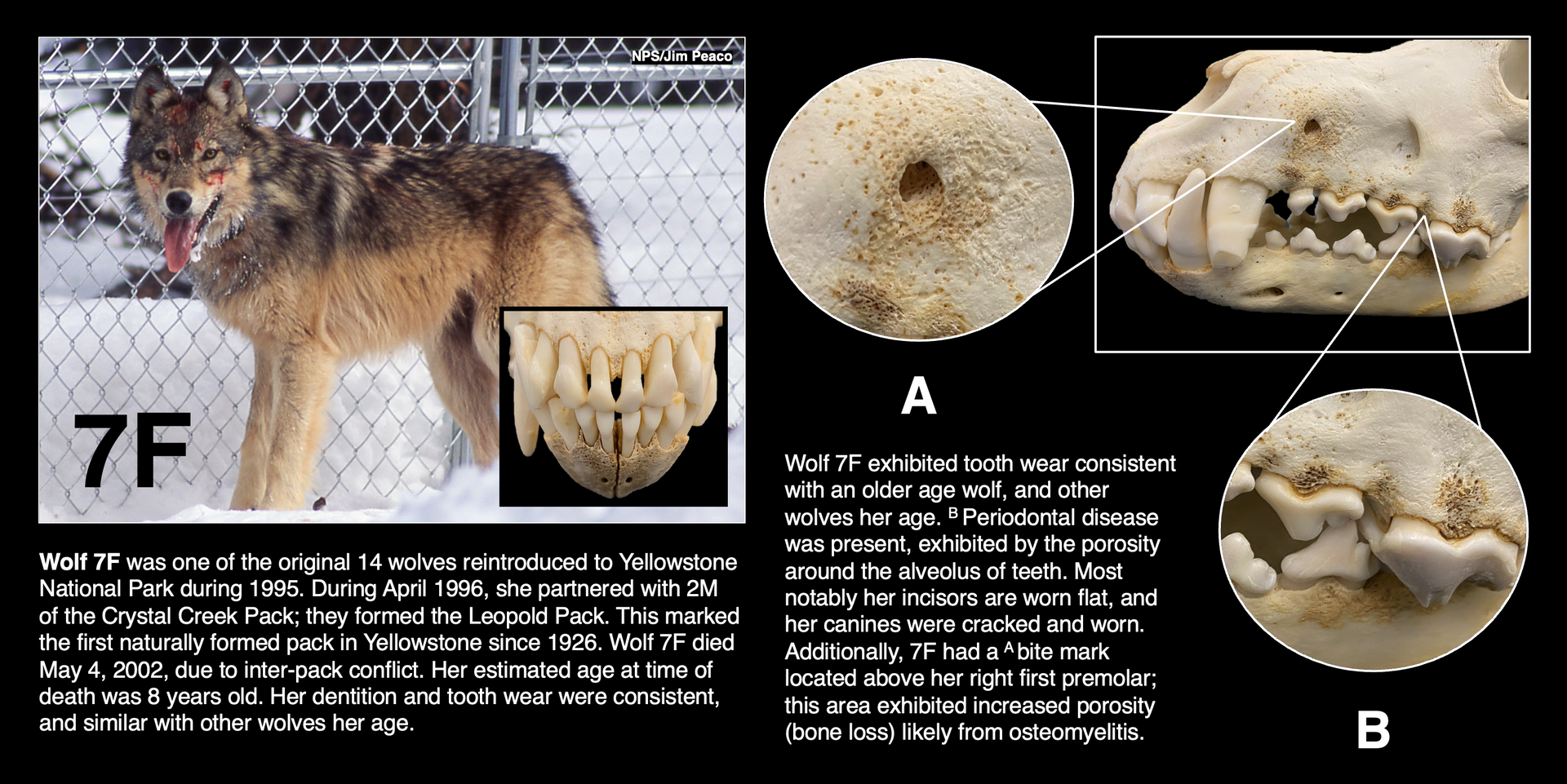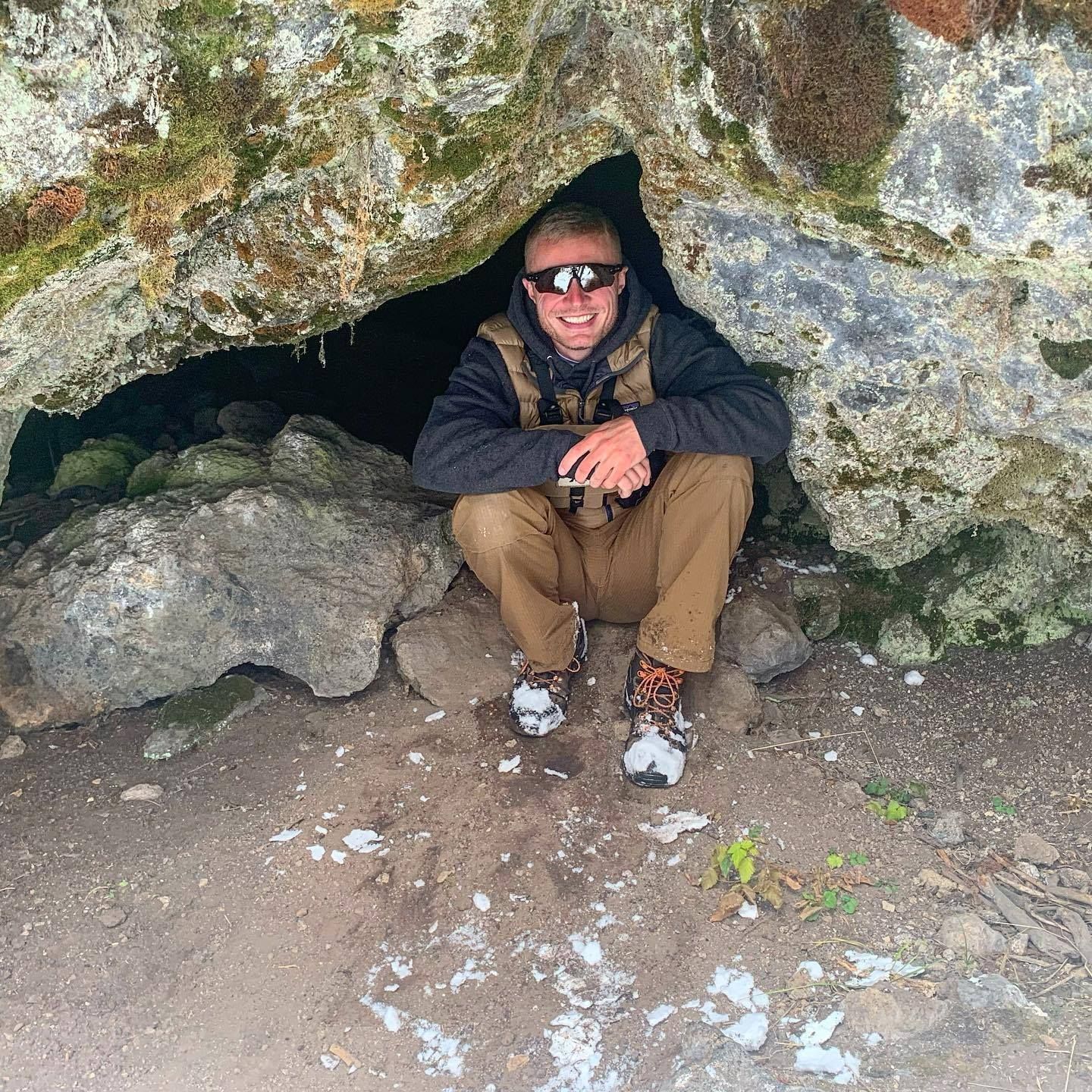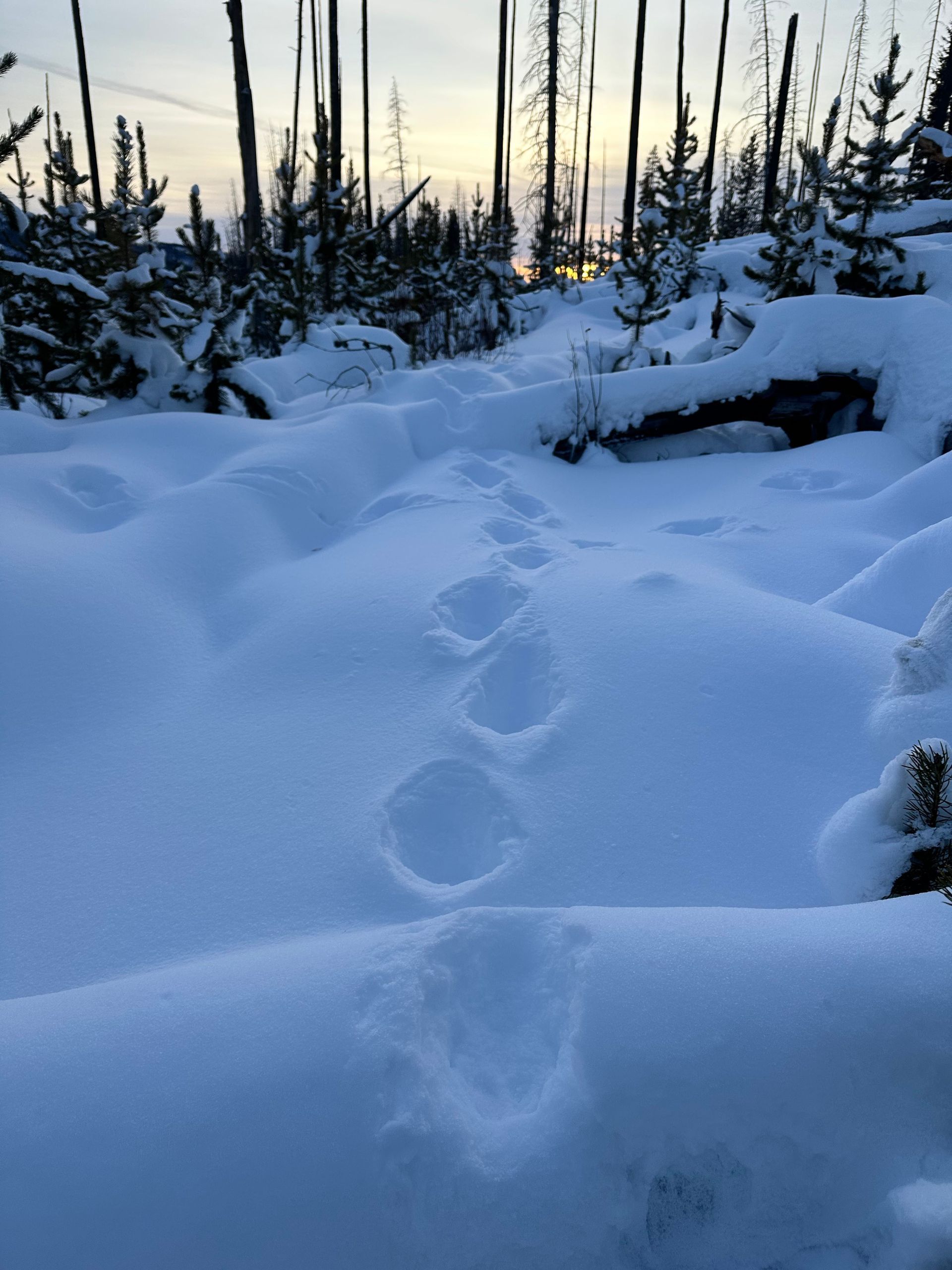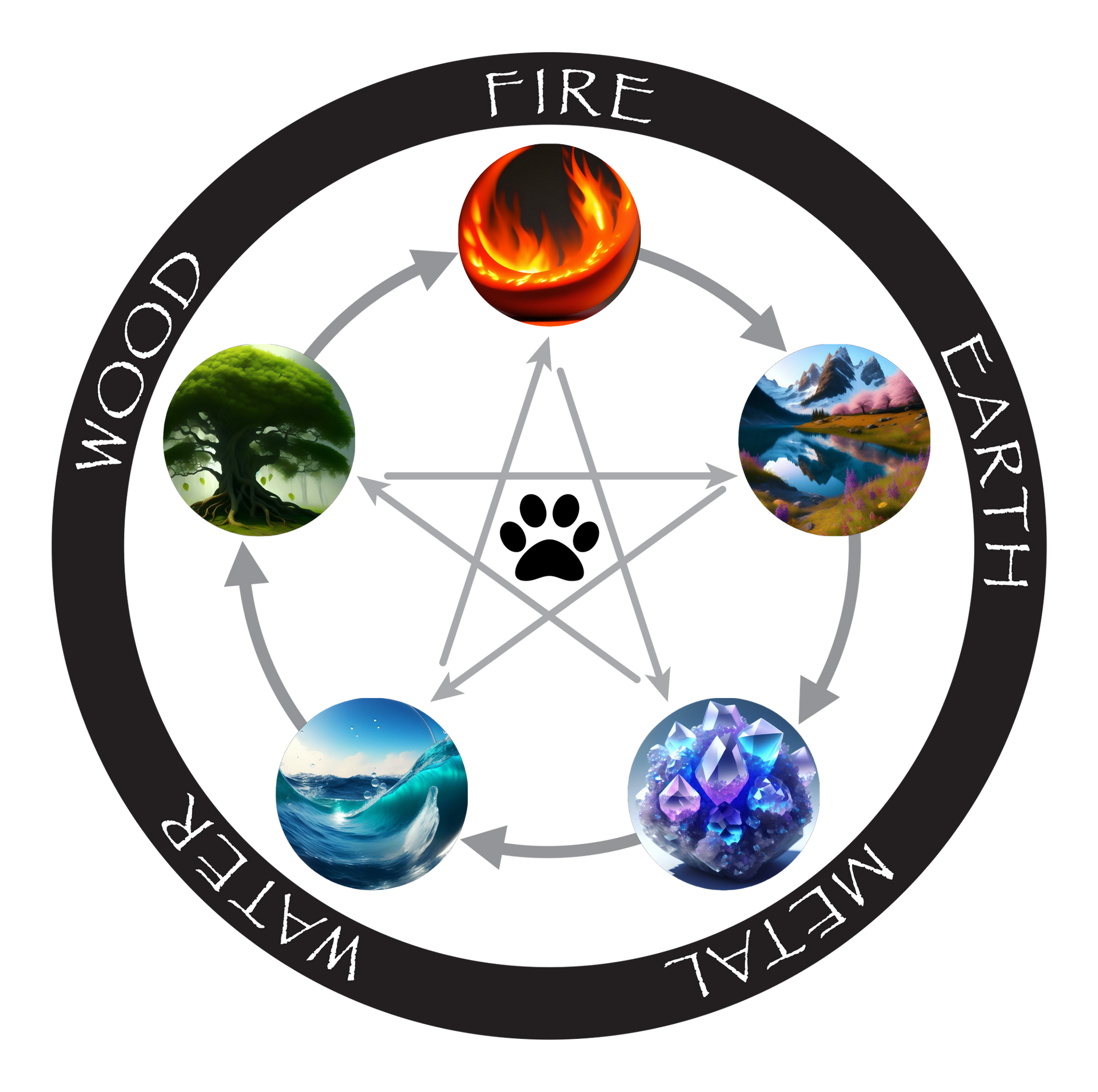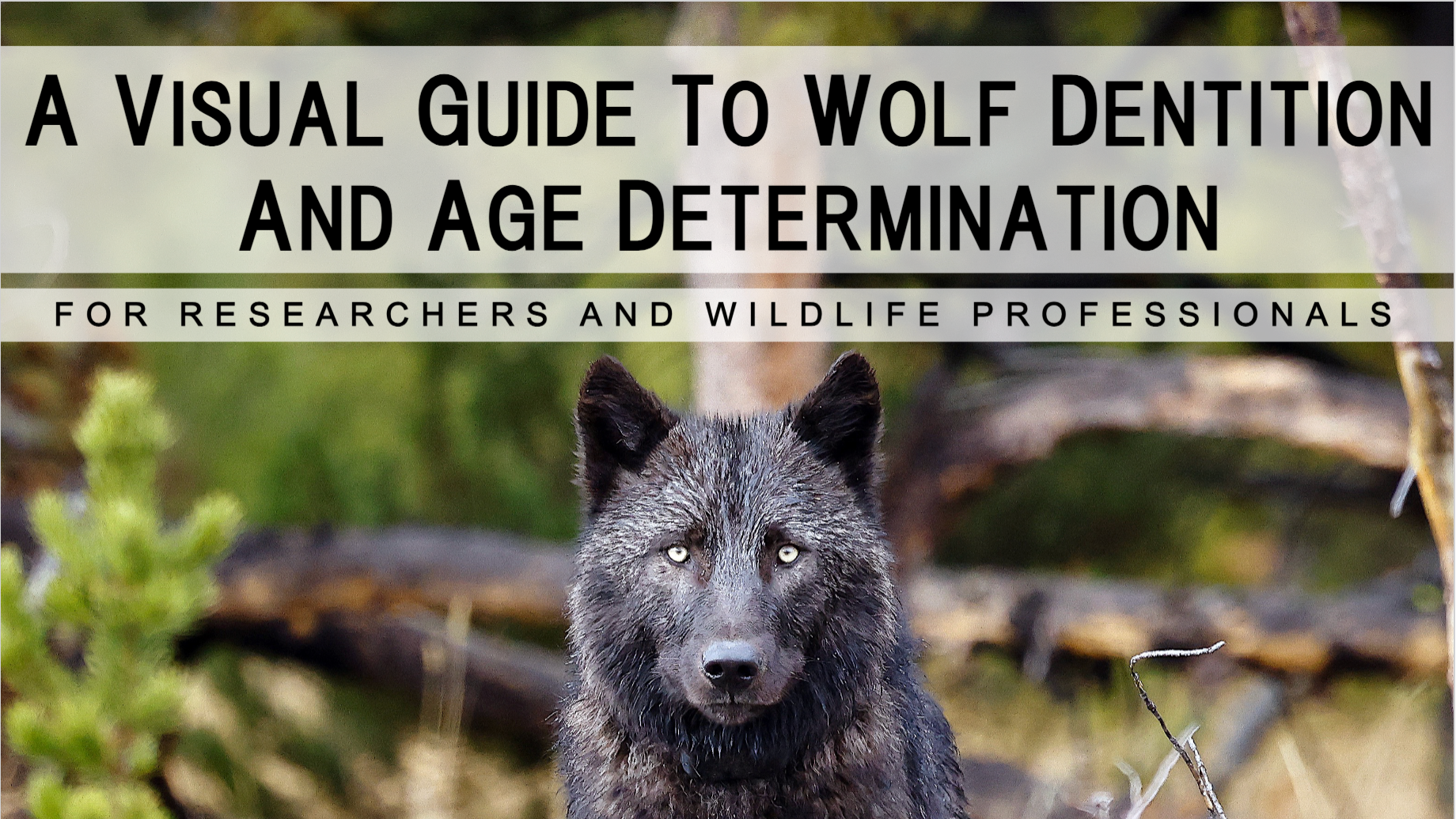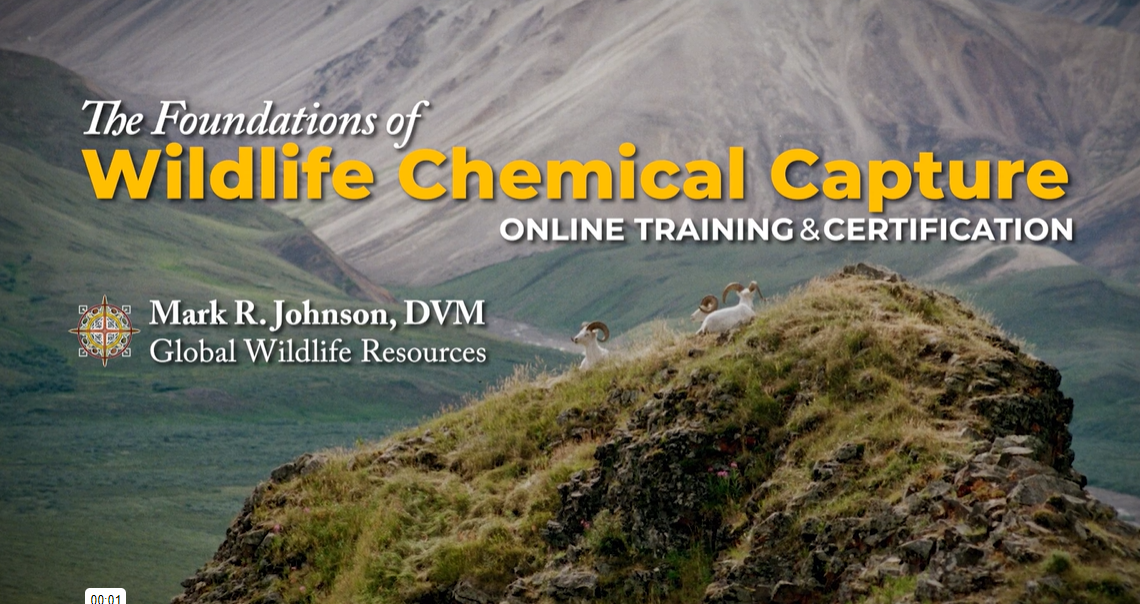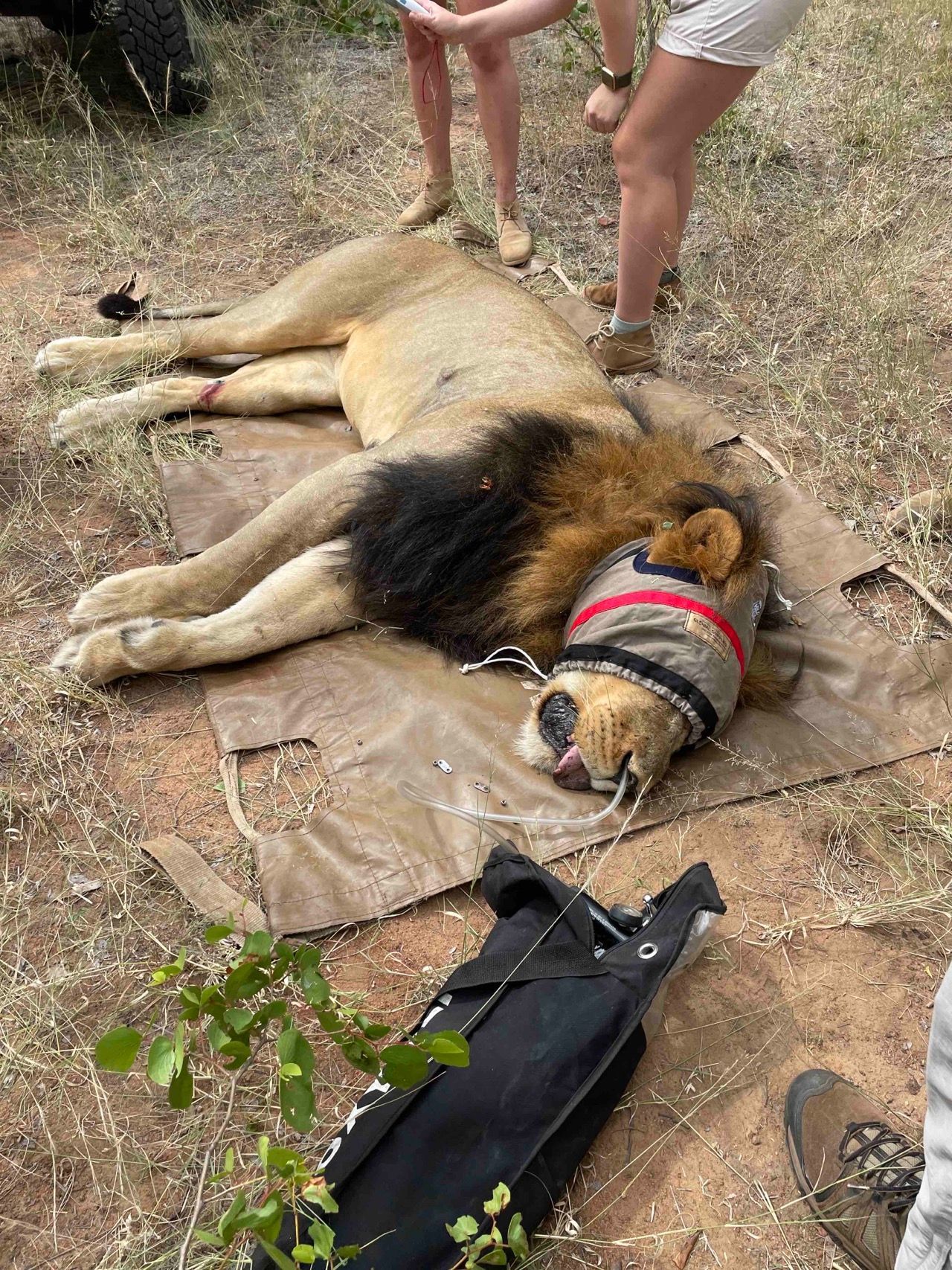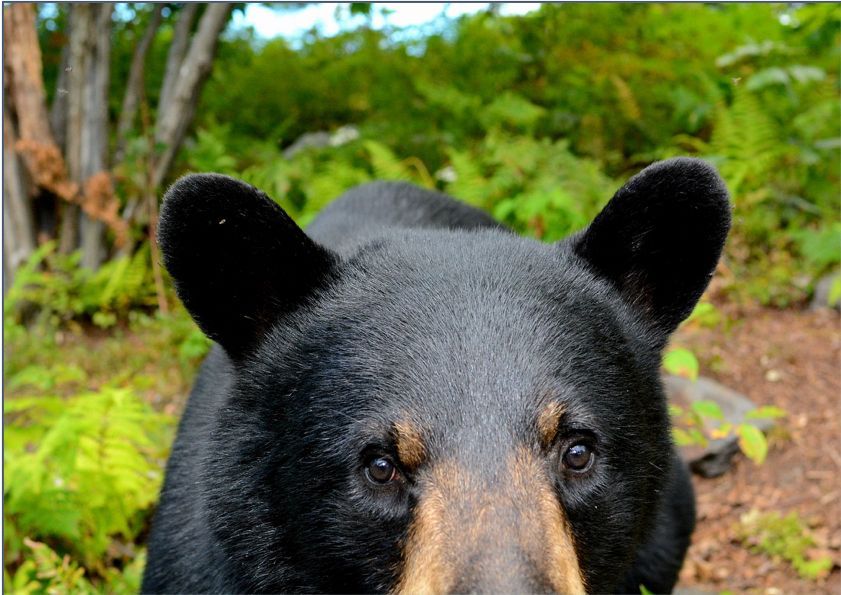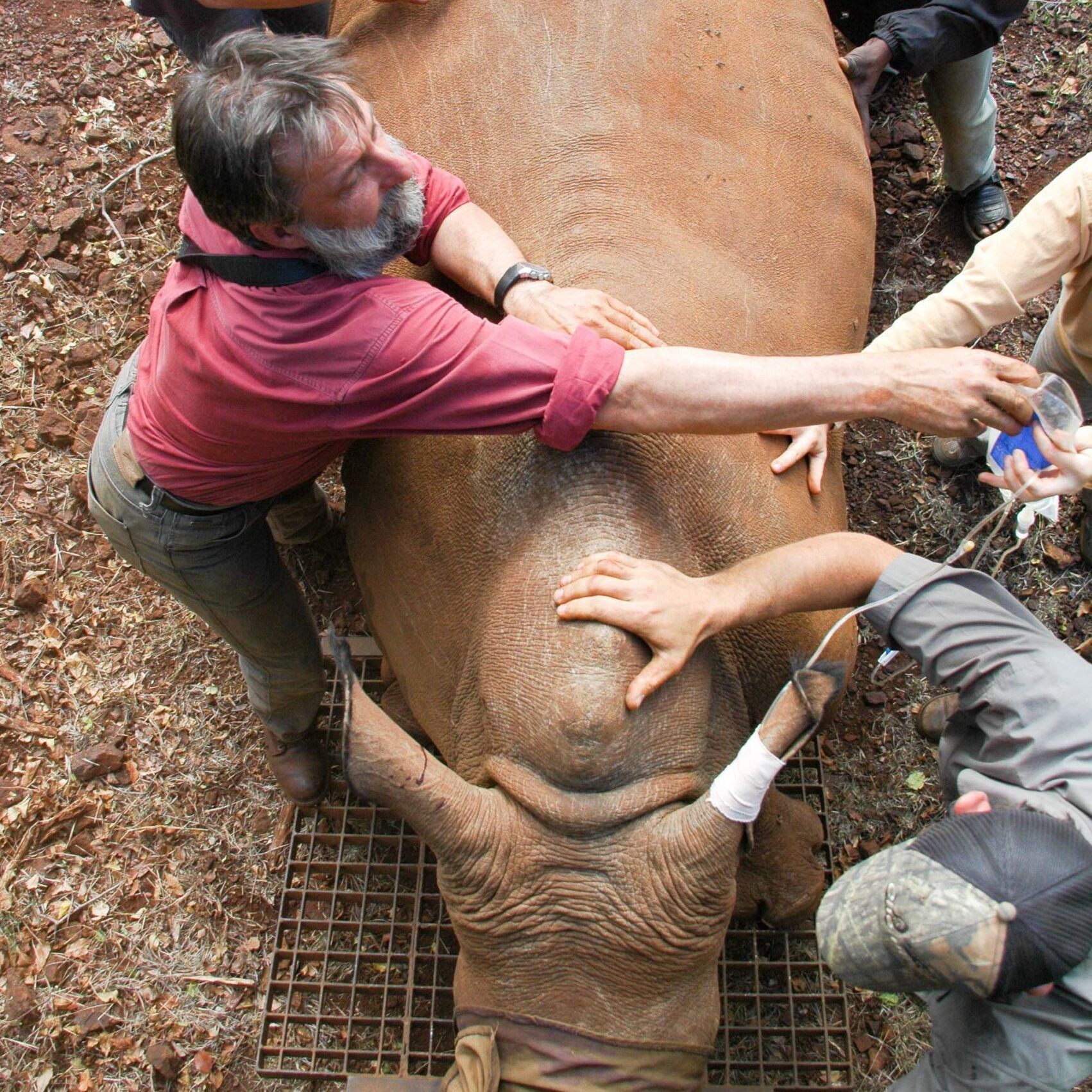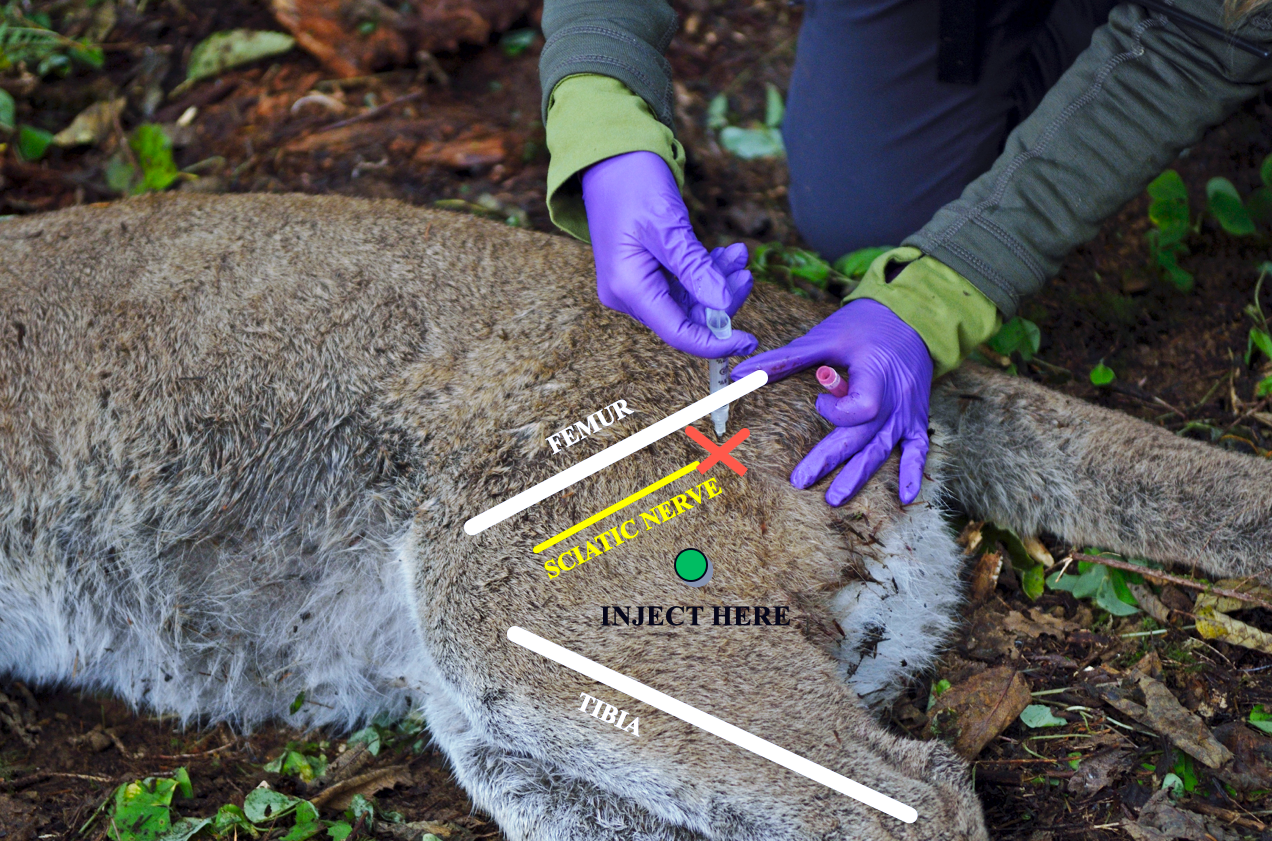What wolf teeth reveal about their lives, and survival in the wild
Introduction: The Visual Guide to Wolf Dentition and Age Determination is the most comprehensive guide to date, focusing on wolf dentition, and the approximation of age based on visual wear patterns. Far too often, dentition and the oral health of wildlife are either forgotten or neglected. The presence of certain dental pathologies, or wear patterns may yield information about the individual health of the animal, and prior exposure to disease.
Historical Context: Wolves have been an integral part of the Greater Yellowstone Ecosystem (GYE) for thousands of years prior to the arrival of humans and inhabitants to the region. During the early 1900’s, wolves were eradicated in Yellowstone, leaving an enormous void, resulting in profound effects and impact to the ecosystem.
On January 12, 1995, the first gray wolves (Canis lupus) arrived from Canada to Yellowstone National Park, part of their reintroduction to the Greater Yellowstone Ecosystem (GYE). Since reintroduction, the gray wolf has thrived in the GYE, especially within the confines and protection of Yellowstone and Grand Teton National Park. Arguably, gray wolves in Yellowstone National Park represent one of the most extensively studied wolf populations in the world, with decades of continuous research and consistent observation. Researchers, technicians, and biologists have intensively followed packs, documenting individuals’ life-histories for more than 25-years. The Yellowstone Wolf Project monitors wolves using VHF and GPS collars. During capture and handling, crews collect samples – allowing for genetic analysis and disease testing. From the ground and air, researchers gather crucial information on the population, pack composition, pup counts, behavior, territories, and species interactions.
Purpose: VHF and GPS collars also allow for known-fate monitoring, providing researchers information when a wolf has either died, or shed its collar. Since the reintroduction, the Yellowstone Wolf Project and winter studies have actively collected the remains of wolves upon their death, particularly their skulls. This presents the unique opportunity to analyze and study the oral and dental pathology of wild wolves.
In 2023, we accessed, analyzed, and photographed 204 wolf skull specimens in the Yellowstone Heritage and Research Center, for the purpose of developing a visual guide for wolf dentition and age determination. A previous study Gipson et al., 2000, provided an aging and dentition diagram for estimating age in wolves based on tooth wear. While this diagram has been helpful to field crews- providing a visual guide will further help allow biologists and technicians estimate the age of the wolf in hand by comparing photos of known age individuals. The visual guide also allows for biologists and technicians to identify the unique variations, and sometimes anomalies within and between age classes. The Yellowstone and Grand Teton wolf programs calculate the ages of the study wolves by utilizing a standard date of birth for pups from any given year (April 15) to their known, or approximate date of death.
What is the importance of dentition and age determination? You may ask, why is dentition and age determination important? Dental disorders are an important aspect of canid health. Documenting the prevalence of various dental/oral pathologies in wolves will contribute to our understanding of their overall health, while further advancing our understanding of dental diseases present within the populations. Age determination is also important to describe age-specific mortality, which is considerably important in wolf population dynamics.
Guide Layout and Information:
The guide was assembled using tooth photos from wolf specimens photographed in the Yellowstone Heritage and Research Center in Gardiner, Montana. Additionally, a handful of dental photos from captured/immobilized wolves are included for reference from the Yellowstone Wolf Project. Each of the 204 wolf skulls photographed from the Heritage and Research Center were catalogued for future use.
Guide Content: In the guide, we review canid dentition basics including their dental formula, criteria for aging, characteristics of tooth wear, terminology and anatomy, and dental diagrams. We also delve into the interpretation of osteological specimens versus living wolves, and what specifically to look at when estimating their age based on visual wear and other characteristics. Moreover, the interpretation and identification of oral ante, peri, and postmortem injuries is important. We provide examples of all three categorizations of injuries that field staff may encounter when utilizing the guide and handling living wolves. The guide also provides a brief overview of some of the oral pathologies that may be observed macroscopically including pulp exposure and necrosis, exposure of tertiary and secondary dentin, gingival recession, missing teeth, and attrition. We also discuss enamel hypoplasia, and the importance of its recognition. The presence of enamel hypoplasia may represent exposure to canine distemper virus (CDV).
We recognized certain variables when using a visual guide to estimate the age of wolves. Some of these include:
- Was the wolf held in an acclimation pen or trap during reintroduction?
- Was the wolf exposed to disease during the development of adult teeth?
- Was there untraditional or unusual wear inconsistent with the wolf’s age?
We addressed these variables in the guide. Wolves that were held in acclimation pens are identified and received a designation. Wolves that were born during CDV outbreak years are identified, and the same for those wolves born during potential CDV outbreak years. Some wolves died from disease, and users may find that information listed under individual profiles under cause of death. Wolves that demonstrated or displayed unusual tooth wear patterns, or missing significant teeth (postmortem, likely due to handling) were excluded from the guide. Only the best possible specimen’s representative of their respective age classes were included.
Access the Visual Guide to Wolf Dentition and Age Determination
here.
Acknowledgments: A special thank you to Kira Cassidy, who provided comments and review, significantly improving this summary.

